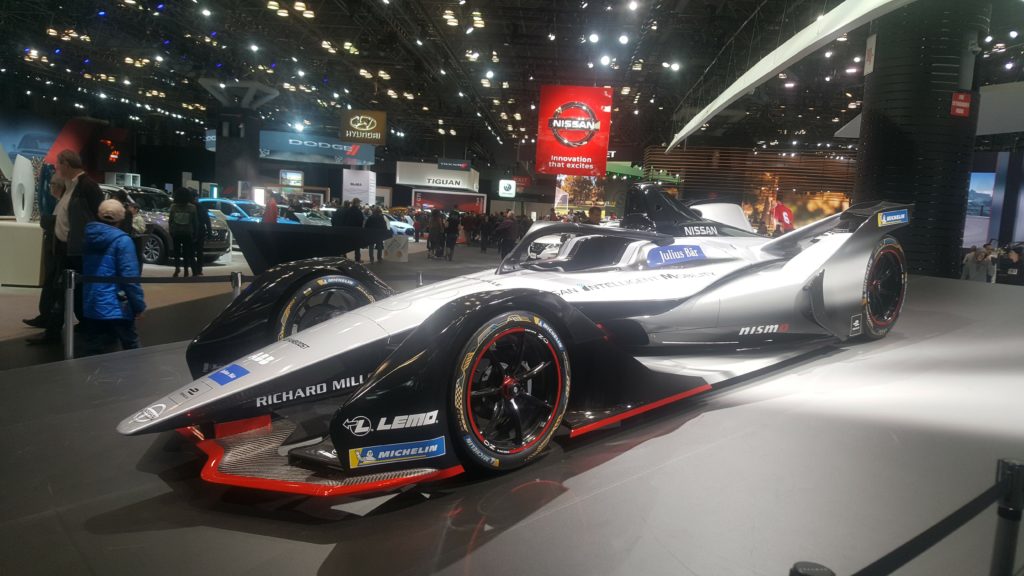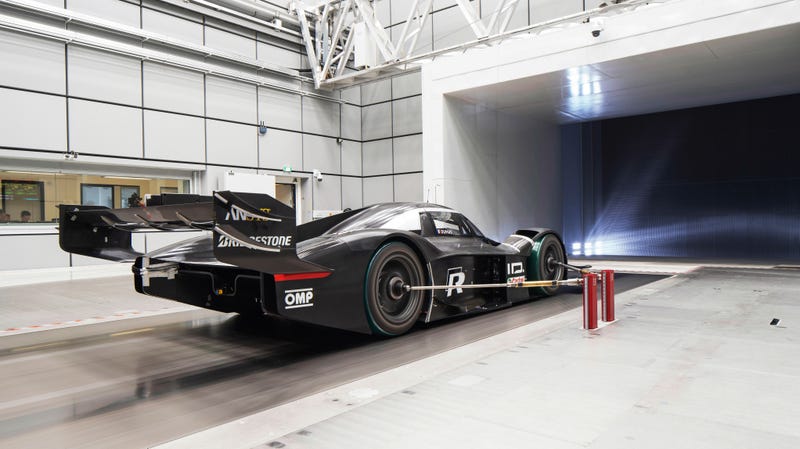
Motorsports has always been the best marketing avenue for fans. The old adage, “Win on Sunday, Sell on Monday” still rings true, as the global motorsports market is set to reach an eight billion dollar value by 2023 (M2 Presswire). There is no better way to develop a technology either, as the engineering and technical prowess of racing enterprises rival the top engineering companies in the world. Race cars are built to higher-than-military spec, and some such as Formula and Prototype cars are essentially upside-down fighter jets. For example, the engineers of Formula One cars have 4 months from the last race of the season to the first race of the next to design, manufacture, and test the fastest racing cars on the planet. That sort of rapid technological development on the cutting edge of emerging powertrain, aerodynamic, material and kinematic technologies is unparalleled in any other industry. Couple this with the immense marketing value of the sport, and you have a platform for making a big impact.

According to a recent article on Formula1.com, F1 is one of the most-watched sports on the planet attracting over 500 million viewers a year (Formula 1). Inspired by this, the FIA (the world motorsport governing body) built a racing series to promote sustainable mobility and serve as a development platform for road-relevant technologies. Formula E has become one of the fastest-growing racing series in popularity with an international schedule of street-circuits and grid of former F1 drivers. The otherworldly acceleration of electric cars as well as the futuristic design and soundtrack takes some getting used to for drivers and viewers, but no racing fan can deny the exciting battles this series creates. From a technical perspective, the development of battery technology has already made huge strides because of Formula E, as the first generation race cars required the drivers switch seats in the middle of the race as the batteries would not last the full race distance. Now, the Generation 2 cars have double the capacity and the manufacturers involved such as BMW, Nissan, Jaguar and Audi are already seeing the technology trickle down into their road cars.

Following the example of Formula E, one of the most famous motorsport events takes place in the United States’ very own Rocky Mountains. The Pikes Peak International Hillclimb hosts some of the most extreme factory and privately built machines on the planet, and has seen electric vehicles climb the mountain since 1981. The record was famously set in 2012 by Sebastien Loeb in the twin-turbocharged V6 powered Peugot 205 T16, but last year Volkswagen shattered the record with the all-electric, all-wheel drive ID-R. The first electric racing car built by Volkswagen, it’s blistering speed took not only the EV record, but the overall record time up the mountain (Jacobs). In light of the diesel-gate scandal, VW has decided to rebrand itself as EV-centric, with plans to electrify half its vehicle lineup by 2029 (Eisenstein). The ID-R prototype serves as a promotional tool to showcase this new image as well as their engineering capabilities.
I personally believe that EV’s are the future of mass transportation. However, as a racing fan I know that marketing EV’s through motorsports is difficult. EV’s make little noise, so they fail to deliver the intense physiological and emotional response in spectators that the unbridled racing engines do. This is a bigger problem than it seems on the surface as fans will turn their attention to that which they find the most exciting, drawing value away from EV-racing. Biofuels such as ethanol have allowed racing series to maintain a green initiative without sacrificing the thrill of that noise. In 2007, the IndyCar Series converted to 100% fuel-grade ethanol in their racing cars (“President Bush Praises IRL’s Ethanol Fuel Initiative”). As the United States’ premier open-wheel racing series as well as home of the world-famous Indianapolis 500, the series has experienced a growth in popularity as spec chassis and engine packages keep racing close and the inescapable attraction to loud, powerful engines has kept fans engaged.
The benefits of Ethanol have also been trickling down into the aftermarket tuning industry as engine builders realize the benefits of the cool burning, high octane alternative to expensive race gas. According to Business Insider, the automotive aftermarket industry was worth 800 Billion dollars in 2018 (“Automotive Aftermarket Industry”). This aftermarket tuner industry has led to more and more engineering and technical development in this sector, and one of the most influential motorsports disciplines in the market is Time Attack. Tracing its lineage to the mountain roads of Japan, Time Attack has surged in popularity and engineering prowess as the production-based Unlimited spec cars approach Formula-car speeds. Time Attack has a unique attraction to the car enthusiast community as well, as the cars racing for the fastest lap time are privately built and based on popular road cars. The work being done in this area could have serious applications in the road car industry, as the high-efficiency small displacement engines running on alcohol fuels used in Time Attack are all based on road production gasoline engines (“2019 Global Time Attack Vehicle Technical & Safety Regulations”). Some manufacturers make life difficult for Time Attack Racers, but it would be much more productive for manufacturers to work with them. Not only would the technical data from the tuners extracting the maximum potential from their parts be beneficial to the engineers at the factory that designed them, but they would also gain access to a unique and fast-growing fan base.
References
“2019 Global Time Attack Vehicle Technical & Safety Regulations.” Global Time Attack, HOD Agency, Inc., 2019, globaltimeattack.com/2019-rules/.
“Automotive Aftermarket Industry 2019 Global Market Statistics, Trends, Growth Opportunities, Leading Country, Key Players, With Competitive Forecast To 2023.” M2 Presswire, 2019.
Eisenstein, Paul A. “Volkswagen Boosts Electric Vehicle Production by 50% with 22 Million BEVs by 2029.” CNBC, CNBC, 18 Apr. 2019.
Formula1. “Formula 1’s TV and Digital Audiences Grow for the Second Year Running.” Formula 1®, Formula One World Championship Limited, 18 Jan. 2019.
Jacobs, Caleb. “Volkswagen I.D. R Smashes Loeb’s Pikes Peak Record by 16 Seconds.” The Drive, The Drive Media, Inc., 24 June 2018.
“Motorsports Market set to cross USD 8 Billion by 2023 at a CAGR of 10.2%.” M2 Presswire, 11 July 2018. Apr. 2019.
“President Bush Praises IRL’s Ethanol Fuel Initiative.” ESPN, ESPN Internet Ventures, 19 July 2006.
